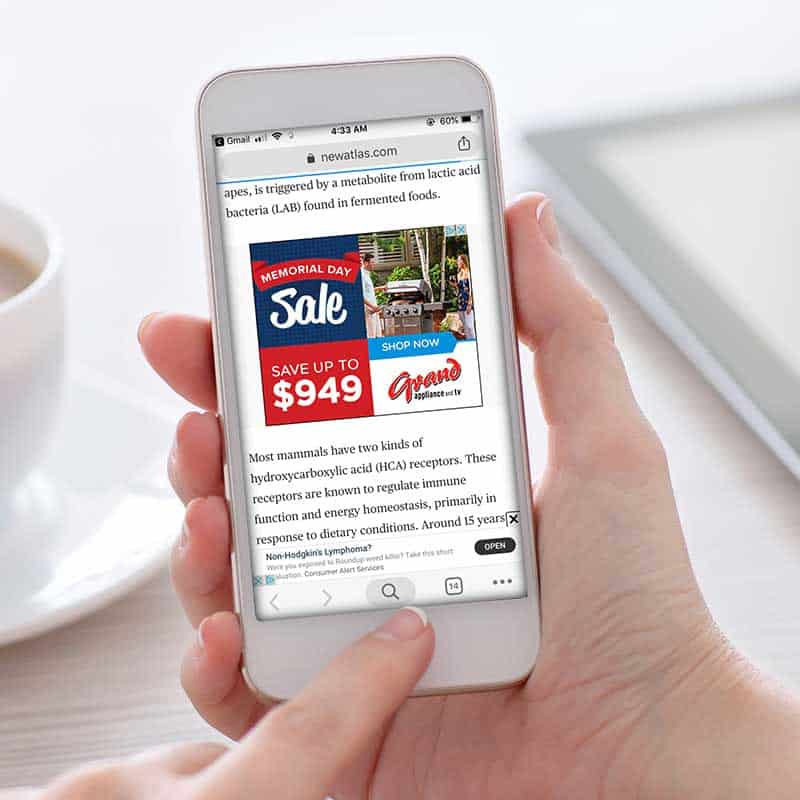How to Run Geofencing Ads with a Programmatic Buy
January 24, 2023 by
One of the questions agencies and retailers frequently ask us is how they can use mobile ad IDs in their Google geofencing ads strategy. The short answer is they can’t. Google Ads is one of the few digital marketing tools that doesn’t allow advertisers to use third party data in targeting. Unless you are an app developer with permission to collect mobile ad IDs and can prove that in your Google Ads account, you’re stuck with the audience Google has to offer.
Using Geofencing Ads in Paid Social Campaigns
While that may not seem like a bad option, it’s not consistent with other major advertising platforms. Meta’s ad-based properties, including Facebook and Instagram, along with Snapchat, TikTok, Twitter, LinkedIn and Pinterest allow advertisers to create custom audiences made up of mobile ad IDs for the purpose of running geofencing ads. This makes for a much more appealing value proposition for advertisers and, just as often, a better return on ad spend. It goes without saying that ads are more effective when audiences are better targeted.
It’s not just the big social platforms that are playing nice. Major media companies and other publishers are reprioritizing Google Ads so their digital properties are more open to advertisers making programmatic ad buys via demand side platforms (DSP). Their argument is sound: Using a DSP gives advertisers the opportunity to build brand and reach target audiences via multiple content destinations rather than just the one option that Google Ads provides.
Evolving consumer behavior supports the move. A recent study by Facebook IQ shows that a vast majority of consumers discover new products and services via social media. Consumers are interacting with ads on social media in the same way television viewers used to respond to ads in the days of linear TV. But even better, paid social is trackable in ways that broadcast TV is not. Meanwhile, search has become a just-in-time, problem-solving tool. (Sushi near me!)
Using Geofencing Ads in Programmatic Display
In its simplest form, programmatic display enables advertising to target audiences while they are visiting websites that carry the advertising. Here’s an example.

When marketers think programmatic display, they think retargeting: Cookie visitors to our website, and run display ads to get them to come back. That’s a smart thing to do, but it just scratches the surface of what’s possible with this digital marketing tool.
While programmatic ad buys give marketers good targeting capabilities, nothing matches the impact of using audiences that you’ve specified down to the user level. While that sounds hard and like it wouldn’t scale, it’s actually easy and scales very well.
Let’s say a challenger QSR brand is looking to grow market share. The smartest way to do that is to target all of the rival QSRs that have similar menu items. For example, Moe’s Southwest Grill wouldn’t necessarily want to woo Burger King’s customers. But they could do very well targeting Taco Bell’s. They could collect the mobile ad IDs of visitors to Taco Bell and run ads targeting just those several million Tex-Mex food lovers using a DSP, such as The Trade Desk, LiveRamp, Pontiac Media, Basis, Choozle and many others. Several DSPs allow marketers to bring their own data to the party to make the ad buy all the more effective. Here’s what a geofencing ad looks like that was bought programmatically via DSP. It’s targeting people who visited Home Depot Garden Centers.

When it comes to your own paid media strategy, two things are key: channel diversification and ROAS. If you’ve got a majority of ad dollars tied up in Google Ads, consider experimenting with geofencing ads via programmatic display. That way, you can reach a much more highly targeted audience across a wide range of media properties. Even better, you can see who visited your stores or other physical locations as a direct result of your investment. Here’s what that looks like.

Want to learn more about using programmatic display as a digital marketing tool for geofencing ads? Start here.

